Author’s Note: The events described below are all true, with the exception of one unconfirmed report. They are documented by both contemporaneous news stories and eye witness accounts.
A Warning: The scandal described below occurred about 50 years ago in what today would be considered a primitive culture, one totally foreign to our learned and refined society. Out of respect for our modern sensibilities, each paragraph containing a disturbing anecdote will be preceded with this symbol—🔫 ⚠️—so as to allow vulnerable readers to skip the offensive material. (I chose a water pistol, instead of a Glock 19 (my weapon of choice), as my trigger emoji out of respect for my readers.)
A Request: I ask you, gentle reader, to make allowances for the unenlightened attitudes of several of the participants in this story. Their periodic displays of cluelessness and gauche behavior are often troubling. Your patience, and most importantly, your condescension, are greatly appreciated.
Thursday, March 10, 1977
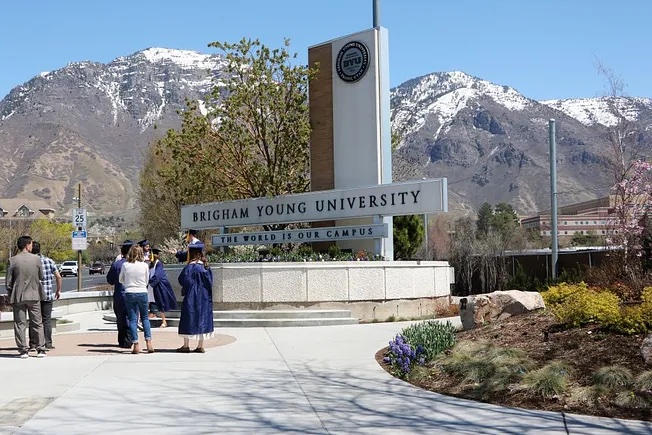
While remnants of a recent snow storm were still visible on campus,🔫 ⚠️ the total absence of snowflakes on two legs would come as a surprise to most college administrators, faculty, and students today. Homo Patheticus, a rare devolution of the human species, was not discovered until about 1988 on the campus of UC, Berkeley. Mercifully, these fragile creatures were nowhere to be found at BYU in the spring of 1977, and therefore were not exposed to the electric and contentious atmosphere on the Quad: political campaigns for student government offices were in full swing.
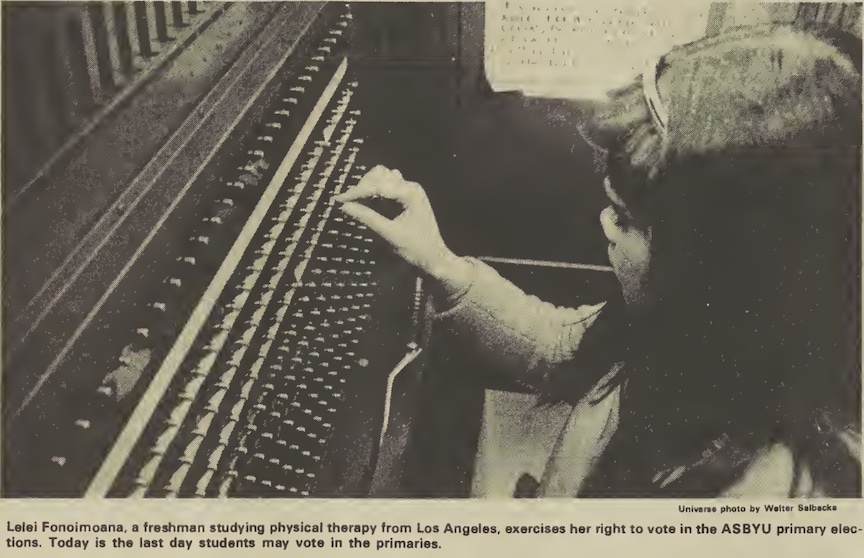
Indeed, the rough and tumble of politics had already given rise to claims of bad faith and infractions of the election rules, even though the primaries had not yet concluded. “Everyone will be assured a front row seat at every major concert,” promised one candidate for Social Vice President, sparking questions about the seriousness of her campaign.[1]
Another candidate for the same office was found guilty by the ASBYU Election Violations Court of distributing campaign literature at a university sponsored assembly in violation of Executive Council Bylaws. While he was ordered to cease all campaigning for eight hours, the court, demonstrating Solomonic wisdom, suspended the sentence because the candidate had not been provided a copy of the campaign rules.[2]
At 8:00 pm, election officials announced the winners—i.e., the top two vote getters—of the primaries for the office of ASBYU President and Vice President, and for the following Vice Presidencies: Academics, Athletics, Culture, Finance, Organizations, Social, Student community Service, and Women’s.[3]
Several proposed amendments to the ASBYU Constitution also received sufficient votes to be placed on the general ballot, including the proposed deletion from the constitution that permits students to inspect “all books and records reflecting ASBYU budgets and financial transactions.” The rationale for this proposed change was to “bring the Constitution in line with existing LDS Church policy which prohibits inspection of financial records” by church members.[4]
Voting in the general election would take place the following week, with election results announced on Friday, March 18, at 8:30 pm.
Monday, March 14, 1977
While the victors in the primaries hit the campaign the trail before voting in the general election began, the rest of the student body was treated to an election retrospective in the school newspaper, The Daily Universe.
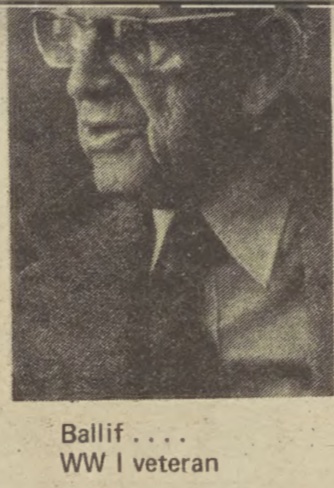
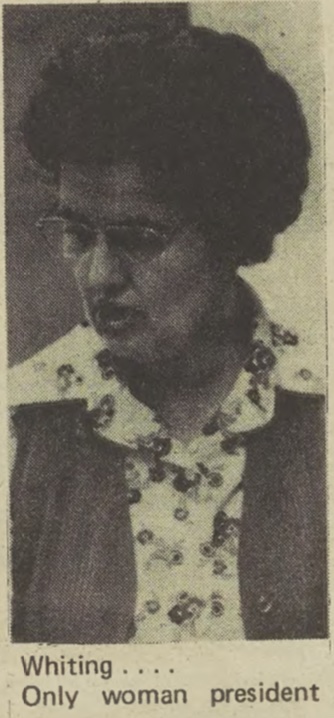
In 1920, they learned, a World War I veteran was chosen by the White Party (the opposition being the Blue Party) as their candidate for BYU student body president. His name was George S. Baliff, a young man who went on to attend law school at both Harvard and UC Berkeley and had a successful career as an attorney and a City Judge in Provo. His landside victory was due in no small measure to the hard work of his campaign manager, Ernest Wilkinson, a future president of BYU (1951-1971)[5]—and a controversial one. In 1966, Wilkinson recruited several students to spy on professors suspected of being too “liberal,” a synonym for “communist” in Wilkinson’s lexicon.[6]
The Second World War had an unprecedented impact on student government at the university. Paul Felt, the student body president in 1942, resigned his position right after the bombing of Pearl Harbor so he, along with many of his classmates, could join the military. As the war continued to draw away many male students, the door opened for Lora Hilton Whiting to become the first woman to serve as student body president.[7] Almost fifty years would pass before a woman would be chosen for that position a second time.[8]
🔫 ⚠️ Coincidentally, a couple of days before this article appeared, The Daily Universe ran an editorial authored by a Mr. Boyle who questioned the need for the Office of Women’s Vice President, claiming that Women are “over equal” on campus. He went so far as to suggest that the Women’s movement had become “a Frankenstein monster.” Bad move, Mr. Boyle. Miss Julie Lindquist, a student from Euless, Texas, was not amused.
In a letter to the editor, she offered a stern rebuttal: “We need a Women’s Office since most ASBYU offices are male-staffed and oriented…. We need a course about women’s role in society because the majority of courses deal with a man’s role … and largely ignore women.” In closing she argued, “if women are the only ones writing intelligent editorials on a particular day…, why shouldn’t they be printed? I seriously doubt that women are ‘over equal’ anywhere, let alone here in ‘Happy Valley.” Your monster looks more like a mouse to me, Mr. Boyle.”[9] (According to unconfirmed reports, Mr. Boyle left BYU without graduating, converted to Catholicism, and became a monk knowing his marriage prospects were bleak.)
Tuesday, March 15, 1977
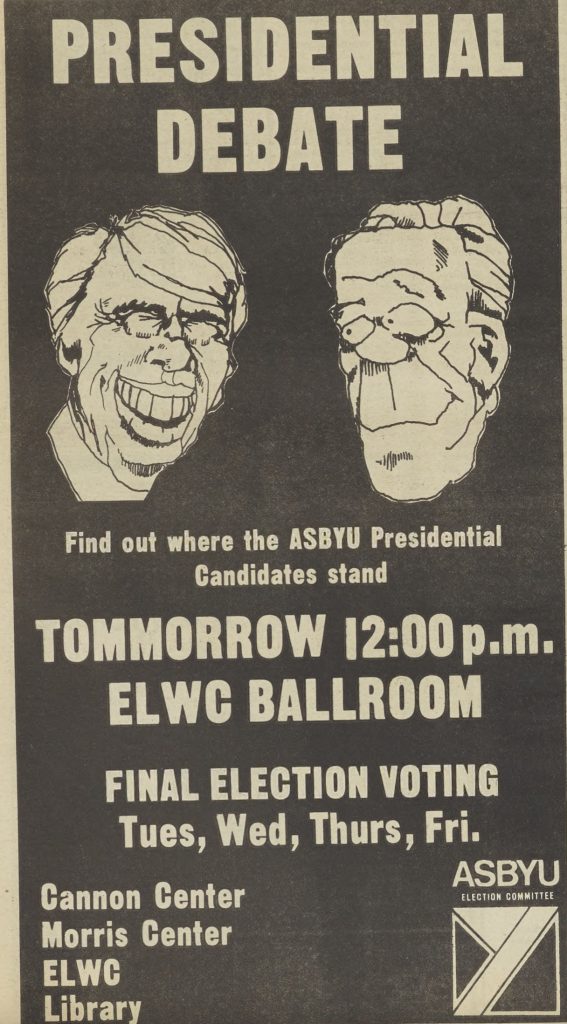
The Presidential debate in the Ernest L. Wilkinson Center Ballroom at high noon between Bill Sadleir and Martin Reeder drew a large, enthusiastic crowd. The Election Committee Chairman chose to pattern the event after the Ford-Carter debates in the Fall of 1976. A five-member panel would ask questions while the audience was given a limited opportunity to do likewise.[10] The principal issues discussed were ticket distribution at campus events, dorm fees, and Reeder’s plan to adopt an “honor code”—in addition to BYU’s existing moral standards—to “promote the uniqueness of the university.”[11]
Behind the scenes, however, dark clouds appeared on the horizon. (As far as mixed-metaphors go, you have to admit, that one was pretty good.) The BYU Attorney General Mark Packer stood accused of mismanaging campaign violation complaints filed with his office, many of which allegedly had not been investigated or had been dismissed without cause. There was even talk of suspending the general election and re-running the primaries. Ultimately, the ASBYU Common Court, after investigating the allegations, declined to grant the requested relief. Voting in the general election would proceed as scheduled and conclude on Friday.
In other news, Marion G. Romney, a member of the First Presidency of the Mormon Church, was on campus to dedicate the Harold B. Library, while a recent BYU graduate won more than $30,000 as a contestant on the TV-game show, “Name That Tune.”
Wednesday, March 16, 1977
The Election Committee kicked off its get-out-the-vote campaign Wednesday morning with what can only be described as a patently offensive promotion:
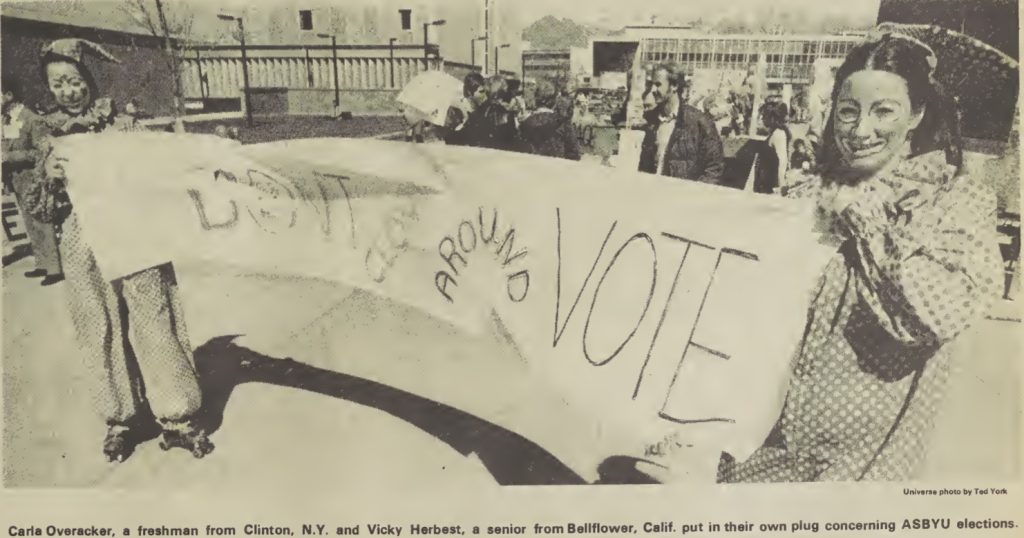
🔫 ⚠️ Clown costumes? In public? Had these young women never heard of “coulrophobia”? And why didn’t BYU’s DEI administrators intervene to stop this?!?
Well, brace yourselves folks: the school didn’t have any in 1977! Indeed, the school’s administration took a hands-off approach towards all student elections and never intervened in squabbles or questionable campaign tactics. Their mindset was, “Their parents and teachers didn’t coddle them, so why should we?” I told you this was a primitive—dare I say, “pagan”—society.
Fortunately, we live in an age where almost a dozen states and scores of public schools have banned clown costumes from public schools. Why? Because of the ever-present creepy clown threat during Halloween, silly.[12] We also owe a debt of gratitude to the ace reporters who write for The GW Hatchet, the student newspaper at George Washington University in our nation’s capital. Because of their diligent research, we now know that clown costumes “have distinctly racist origins in the United States.”[13]
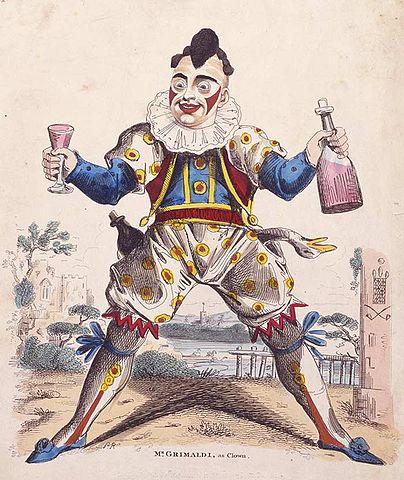
Never mind that clowns, jesters and their ilk have been around for almost three millennia, or that the Father of Modern Clowning is Joseph Grimaldi (1778-1837) who elevated the Whiteface clown to a starring role.[14] You must not forget, and you should be eternally grateful, that we now live at a time when the rising generation believes their college professors have more to learn from them than the other way around. Ronald McDonald, they’re coming for you, buddy.
In other news, Campus Security ticketed six missionaries studying foreign languages at the Language Training Mission for jaywalking.[15] It’s a slippery slope, elders—a small step from jaywalking, to smuggling, racketeering, and finally capital offenses, such as abusing my dog.
Thursday, March 17, 1977
Late Thursday evening, the poop hit the proverbial windmill, and Friday morning students were greeted with this headline in The Daily Universe: “Court ruling today may delay vote tallies.”
A complaint had been filed with the ASBYU Supreme Court by two students, one of whom was the Director of the Consumer Division of the Ombudsman’s Office. The petitioners alleged numerous voting irregularities and asked the Court to examine “the validity of the polling as conducted under the auspices of the ASBYU Elections Committee.” The Court agreed to hear the case on Friday at 1:00 p.m.[16]
Allegations of voting machine malfunctions, inadequate write-in ballots, voting booths left unattended, and ballot stuffing left the campus reeling.[17] “How could this happen at the Lord’s university?” people wondered. More importantly, “who can we look to in this time of crisis? Who can part the waters of these rough seas, and row the boat ashore to the promised land?” All lonely eyes on campus turned the following day to one person—not Joe DiMaggio, but the Chief Justice of the Supreme Court.
Friday, March 18, 2017
Shortly after dawn on Friday morning, the Chief Justice’s alarm went off. Time to get dressed and head to the law library of the J. Reuben Clark Law School. He only had a few hours to do some legal research before the evidentiary hearing began at 1:00 p.m.
While ensconced in a small cubicle, he combed Utah statutory and case law regarding elections and the circumstances where invalidating an election are appropriate. He also sought guidance in the legal opinions of his counterparts on the United States Supreme Court. After finishing his work, he grabbed a quick bite to eat at the Wilkinson Cafeteria and then headed to the hearing, which commenced promptly at 1:00 pm and did not adjourn until “eight hours, 23 witnesses and countless consultations later.”[18]
Prosecutor O’Neill, the legal representative for the plaintiffs, called a total of 17 witnesses. Doug Erekson testified that for “at least 14 minutes,” there were no write-in ballots at the ELWC voting booths. Other witnesses said there were times when no election official was present at the voting booth in the Morris Center, making it possible for someone to vote more than once. Defense counsel countered, saying that the voting machines had likely been locked during the booth attendant’s absence. Witnesses for the defense also testified that only one person was caught stuffing the ballot box in the ELWC. And she was unsuccessful.
This back and forth, along with numerous bench consultations, went on for six hours. The Chief Justice, by all accounts, conducted the hearing impartially and with admirable equanimity. His composure was rattled only once when a young woman in the gallery, at the conclusion of the hearing, shouted a question, one he had been asked many times before: “Are you married?” He did not dignify such impertinence with a response.
The three justices then retired to chambers where they deliberated for two hours. They reviewed the yet unannounced election results while the Chief Justice shared with his colleagues his research. After considerable discussion, they reached a consensus and returned to the hearing room.
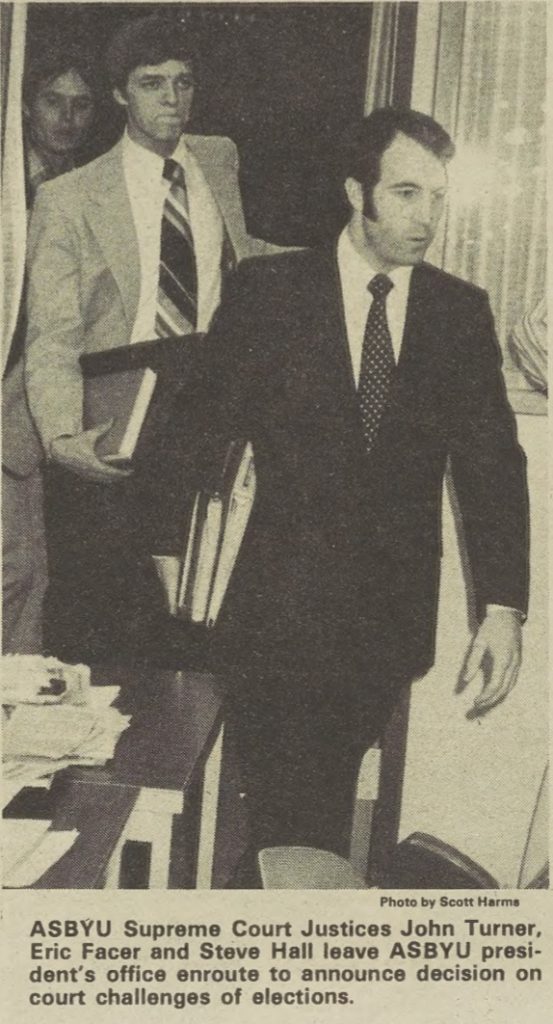
(🔫 ⚠️ Yes, I know what you’re thinking: these three pretentious young men deliberately chose to wear jackets, white shirts, and power ties as status symbols. Vintage white patriarchy. Ugh!)
Chief Justice Eric Facer reconvened the hearing and, before announcing the Court’s decision, proceeded to explain the law guiding their thinking. First, however, he praised the representatives of both plaintiffs and defendants, expressing admiration especially for plaintiff’s counsel, Mr. Oneill. His closing argument where he proclaimed, “If we have evidence that one [voter’s] rights were violated, then it affects the entire student body!” was Darrow-esque, the Chief Justice said.
Alas, he said, this is not the relevant legal standard. Rather, the Utah Election Code allows a judge to invalidate an election only if all the alleged irregularities (e.g., illegal votes, rejected legal votes, voting officials malfeasance or mistakes at polling places, etc.) would be “sufficient to change the result.”[19] He went on to say: “Just as the U.S. Supreme Court has ruled that ‘a defendant is entitled to fair trial, but not a perfect one,’ so today we apply the same standard to campus elections.” (Whew. I don’t know about you, but that line gave me goose bumps.)
Because the three write-in candidates for the office of ASBYU President garnered, in the aggregate, only 332 votes, as compared to the 5,373 ballots cast for the winner, and since the margin of victory in the other races was so substantial as to negate the impact of the few documented voting irregularities, the Court unanimously declined to invalidate the election.[20]
Simultaneously, the Chief Justice urged the Elections Office to correct the proven instances of voting mismanagement and make all necessary rule changes. With that, he concluded the hearing with admirable humility by saying, this decision “represents the consensus of three minds, inept and inadequate as they may be.”[21]
The Court’s decision was greeted with “cheers of joy and relief,”[22] 🔫 ⚠️ though some of the losing candidates were despondent. Remember, there was no Office of Belonging in this dark age to comfort these individuals with chamomile tea and a participation trophy. Let us be grateful for how we now handle these situations.
For example, the University of Utah a few years ago built a safe space/cry room in its library, complete with stuffed animals and tissues for those students who feel stressed by a parking ticket or a hangnail. And for those students whose favored candidates do not prevail in a presidential election, today professors at Yale, Columbia and other universities will cancel classes and exams so you can have time to recover.[23]
🔫 ⚠️ One of the most disturbing post-election episodes involved the two candidates—Karen Bybee and Karen Hill—for the Office of Women’s Vice President. Ms. Bybee, the victor said there were “good feelings” between her and Hill, and went on to say, “We both wanted to come out of the election as friends.”[24]
🔫 ⚠️ Ladies, this is not how you’re supposed to treat your opponent. Unfortunately, there was no female role model like we have today to teach them that their opponents and supporters are nothing more than a “basket full of deplorables,” and that you must stifle all intellectual curiosity and never ask, “Are there legitimate reasons why someone might not vote for me?”[25] (I suppose their post-election behavior was predictable. After all, the Christian name of each one was “Karen.”) Oh, and it gets worse.
🔫 ⚠️ No one ever had the courage to reject the Supreme Court’s decision and speak truth to power by boldly declaring that the election had been stolen. And when the Elections Committee tightened the voting rules so as to mitigate the risk of future balloting irregularities, not one person had the moxy to state the obvious: “This is nothing less than Jim Crow 2.0!”
🔫 ⚠️ The Chief Justice’s behavior admittedly was the most egregious of all. His demeanor throughout the hearing, and his false modesty when announcing the Court’s verdict, reeks of a White Savior Complex. If he were confronted today with this allegation (assuming he is still alive), I suspect he wouldn’t deny it. But he probably would add, “And, you’re welcome.”
[1] Debbie Boothe, “Social Office hopeful is an aspirant after all,” The Daily Universe, March 10, 1977, p. 1.
[2] “Candidate found guilty, (The Daily Universe, March 10, 1977, p. 1.
[3] Mark Johnson, “Primary victory leaves Reeder, Sadleir on top,” The Daily Universe, Friday, March 11, p. 1.
[4] Debbie Boothe, “Constitution changes supported, challenged,” The Daily Universe, March 11, 1977, p. 1.
[5] Debbie Boothe, “Campaigns of the past: lively, spirited fun,” The Daily Universe (The Monday Magazine, March 14, 2017), p. 7.
[6] Jeff D. Blake, “Ernest L. Wilkinson and the 1966 BYU Spy Ring: A Response to D. Michael Quinn,” Dialogue: A Journal of Mormon Thought, Vol.28, No. 1, 1995, pp. 163-172.
[7] “Campaigns of the past,” pp. 7-8.
[8] “Brigham Young University Student Service Association,” Wikipedia: The Free Encyclopedia, last accessed on April 14, 2024: https://en.wikipedia.org/wiki/Brigham_Young_University_Student_Service_Association
[9] Julie Lindquist, “Women ‘not over equal,’” The Daily Universe, March 16, 1977, p. 14
[10] Debbie Boothe, “First lap of race to begin with a debate, balloting,” The Daily Universe, March 15, 1977, p. 1.
[11] Mark Johnson, “Candidates debate tickets, dorm fees,” The Daily Universe, March 16, 1977, p. 1.
[12] Tawnell D. Hobbs, “More Schools Ban Clown Halloween Costumes After Scares, Pranks,” Wall Street Journal, October 28, 2016, last accessed on April 14, 2024: https://www.wsj.com/articles/more-schools-ban-clown-halloween-costumes-after-scares-pranks-1477678546
[13] Nyla Moxley, “Call out racist costumes this Halloween,” The GW Hatchet, October 23, 2023, last accessed on April 14, 2024: https://gwhatchet.com/2023/10/23/column-call-out-racist-costumes-this-halloween/
[14] “Joseph Grimaldi,” Wikipedia: The Free Encyclopedia, last accessed on April 14, 2024: https://en.wikipedia.org/wiki/Joseph_Grimaldi
[15] “Security tickets elders, Y students for jaywalking,” The Daily Universe, March 17, 1977, p. 2.
[16] Mark Johnson, “Write-in critics request court to rule on voting,” The Daily Universe, March 18, 1977, p. 1.
[17] Ibid.
[18] Debbie Booth and Mark Johnson, “Court challenges, write-in campaigns fail to derail victorious team of Reeder-Holmgren in ASBYU balloting,” The Daily Universe, March 21, 1977, pp. 1 & 5.
[19] Ibid, p. 6; Utah Code § 20A-4-402(1).
[20] Ibid, p. 2.
[21] Ibid.
[22] Ibid.
[23] Eric F. Facer, “Why students accept Big Brother,” Washington Post, Letter to the Editor, Dec. 29, 2019, p. 15.
[24] “Court challenges,” p. 2.
[25] Noah Rothman, “‘Get Over Yourself,’” National Review, April 2, 2024, last accessed on April 14, 2024: https://www.nationalreview.com/corner/get-over-yourself/
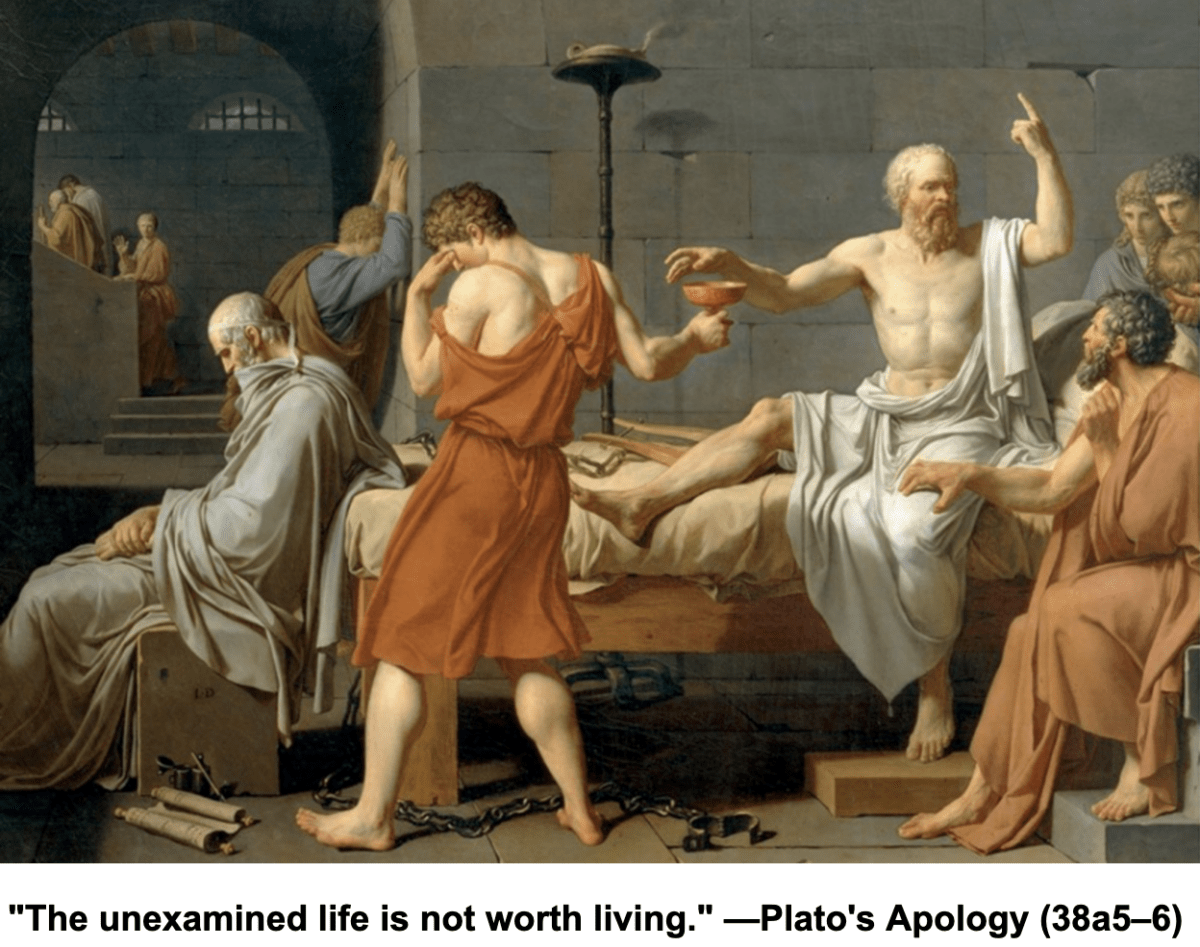
Loved this article Eric. How did we manage to survive such abuse for all those years? I’ve been chuckling all the way through the article.
You continue to amaze me!!
Hilarious. Can you account for looking so much younger, if not a bit grim, in 1977?
Enjoyed the article immensely. An early example of election fraud. At least they didn’t have the ever dangerous mail in ballots.
Was that your Dad in the photo?